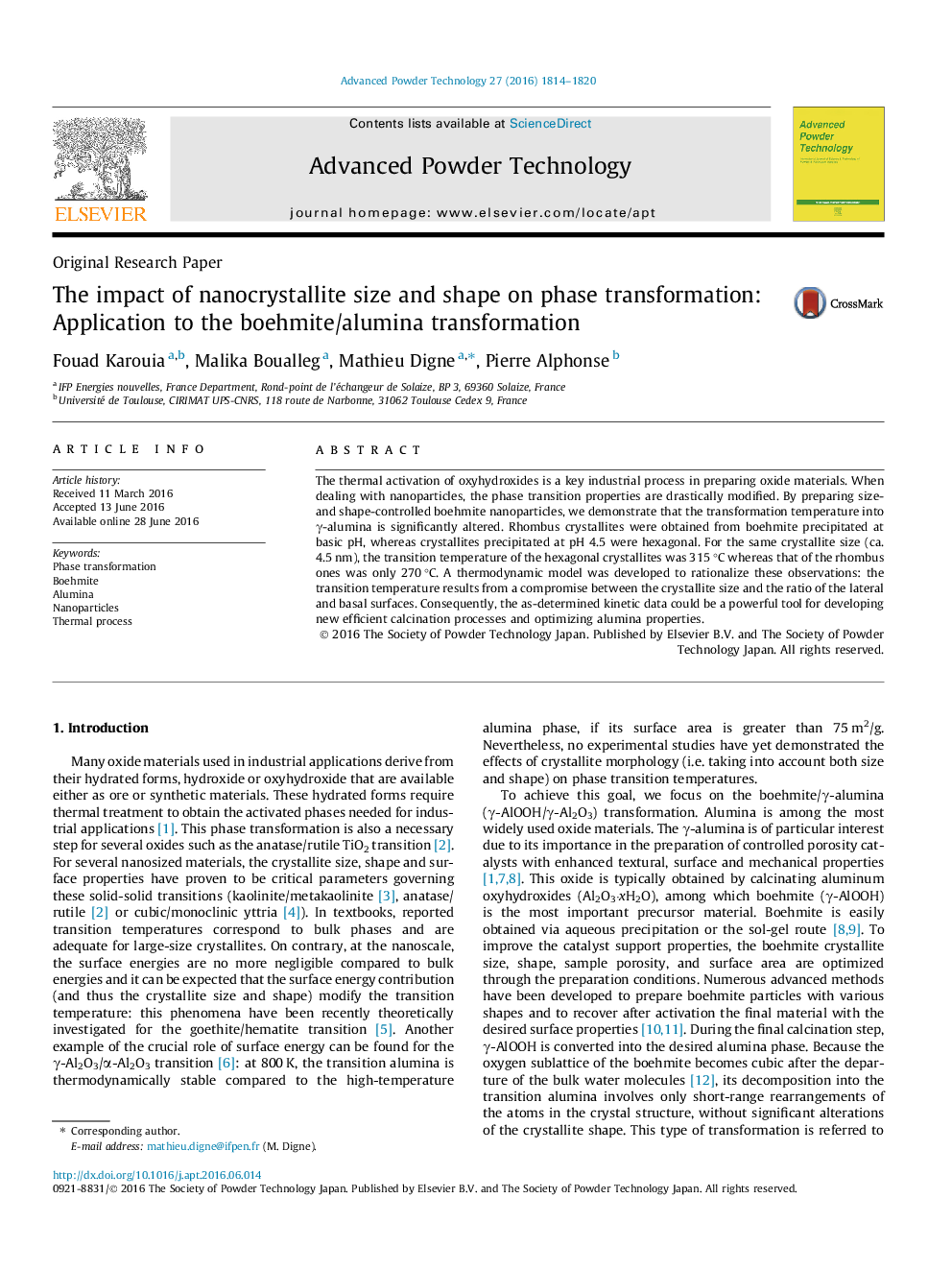| Article ID | Journal | Published Year | Pages | File Type |
|---|---|---|---|---|
| 143976 | Advanced Powder Technology | 2016 | 7 Pages |
•Boehmite nanoparticles with different size and shape were prepared.•Their phase transformation into γ-alumina was investigated.•Depending on the morphology, the transition temperatures range from 270 to 360 °C.•The nature and amount of exposed surfaces explain such differences.
The thermal activation of oxyhydroxides is a key industrial process in preparing oxide materials. When dealing with nanoparticles, the phase transition properties are drastically modified. By preparing size- and shape-controlled boehmite nanoparticles, we demonstrate that the transformation temperature into γ-alumina is significantly altered. Rhombus crystallites were obtained from boehmite precipitated at basic pH, whereas crystallites precipitated at pH 4.5 were hexagonal. For the same crystallite size (ca. 4.5 nm), the transition temperature of the hexagonal crystallites was 315 °C whereas that of the rhombus ones was only 270 °C. A thermodynamic model was developed to rationalize these observations: the transition temperature results from a compromise between the crystallite size and the ratio of the lateral and basal surfaces. Consequently, the as-determined kinetic data could be a powerful tool for developing new efficient calcination processes and optimizing alumina properties.
Graphical abstractFigure optionsDownload full-size imageDownload as PowerPoint slide
